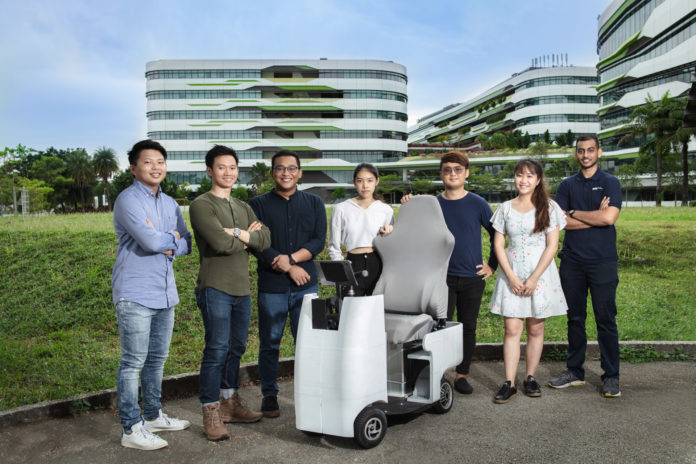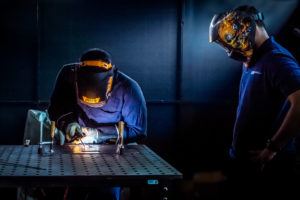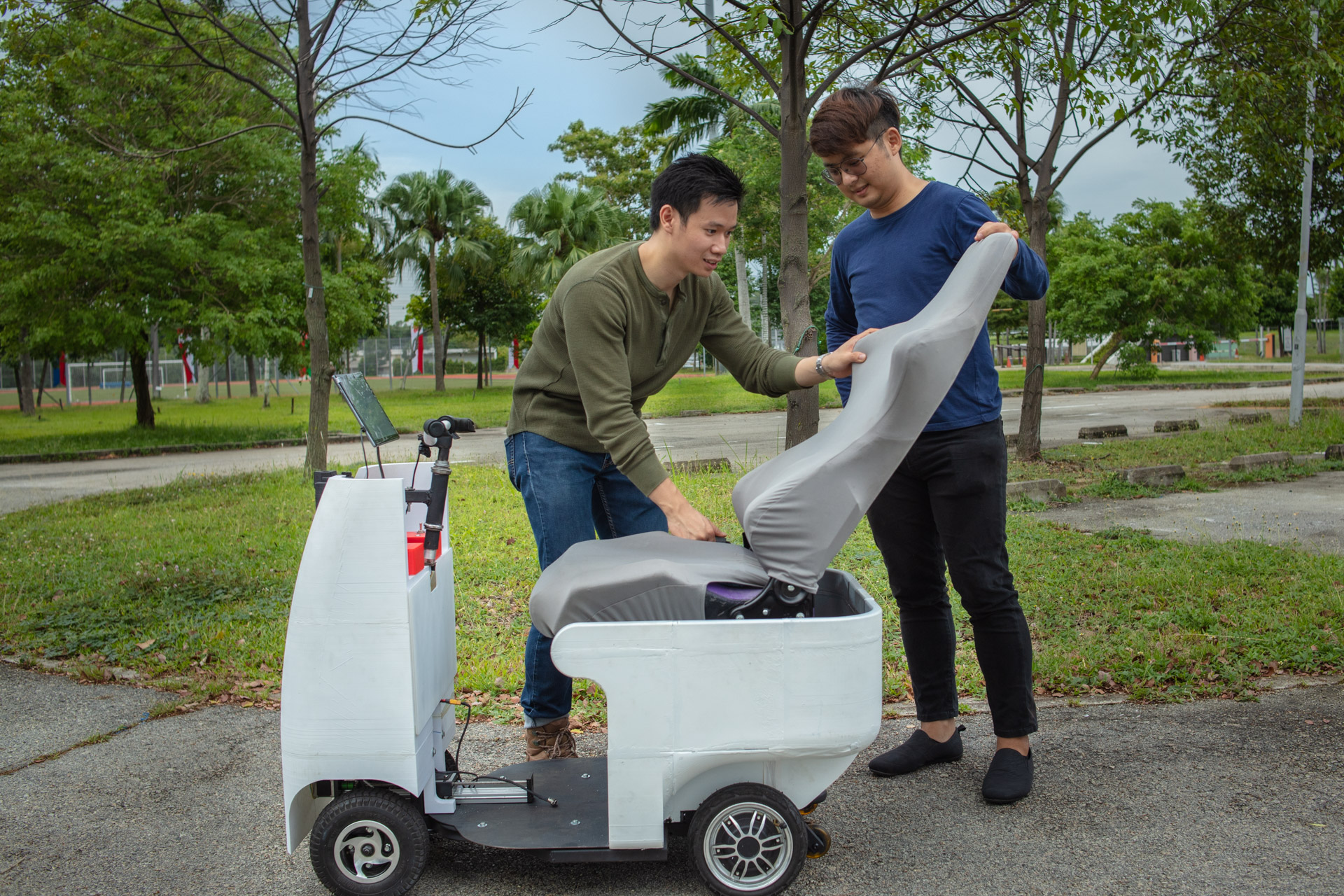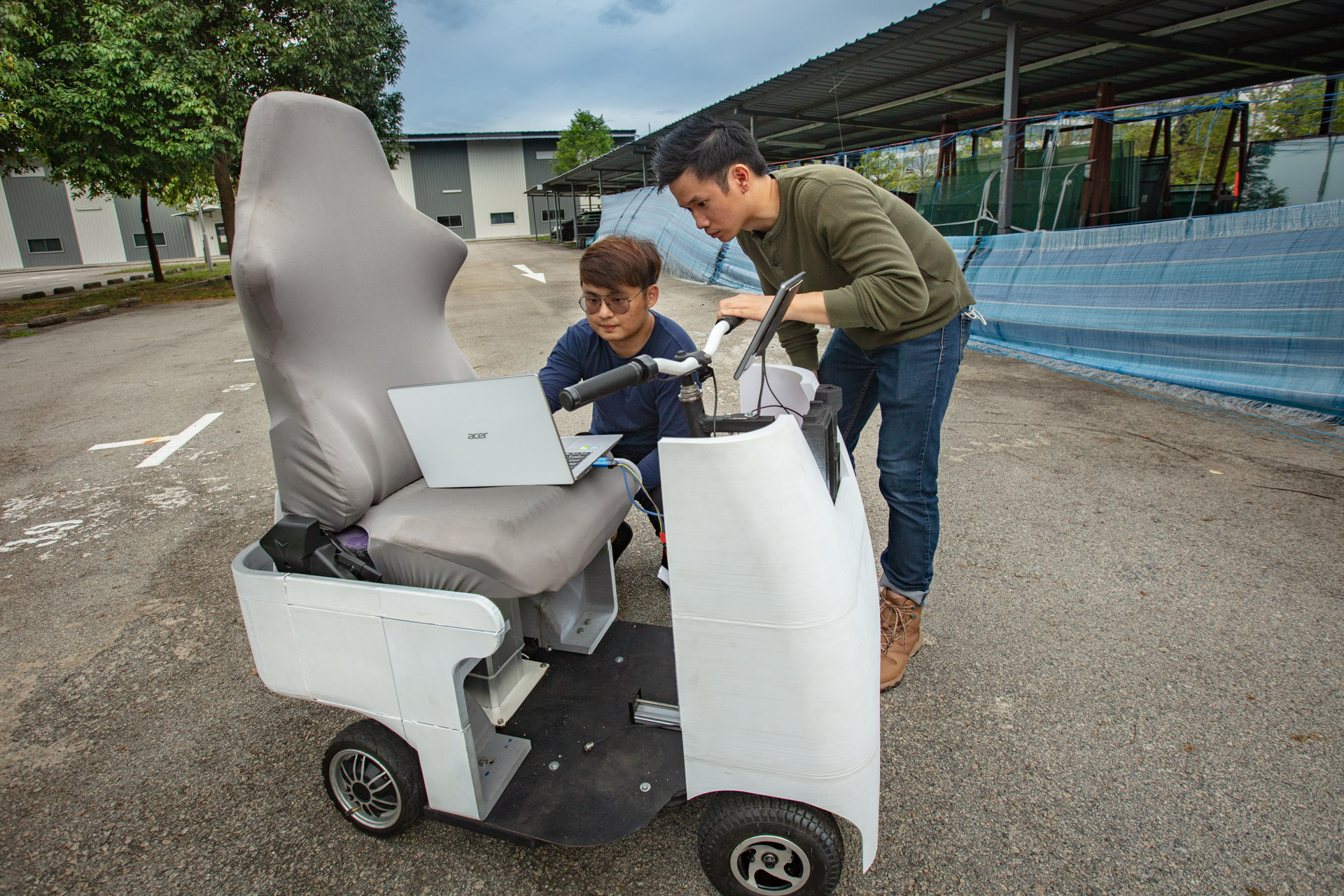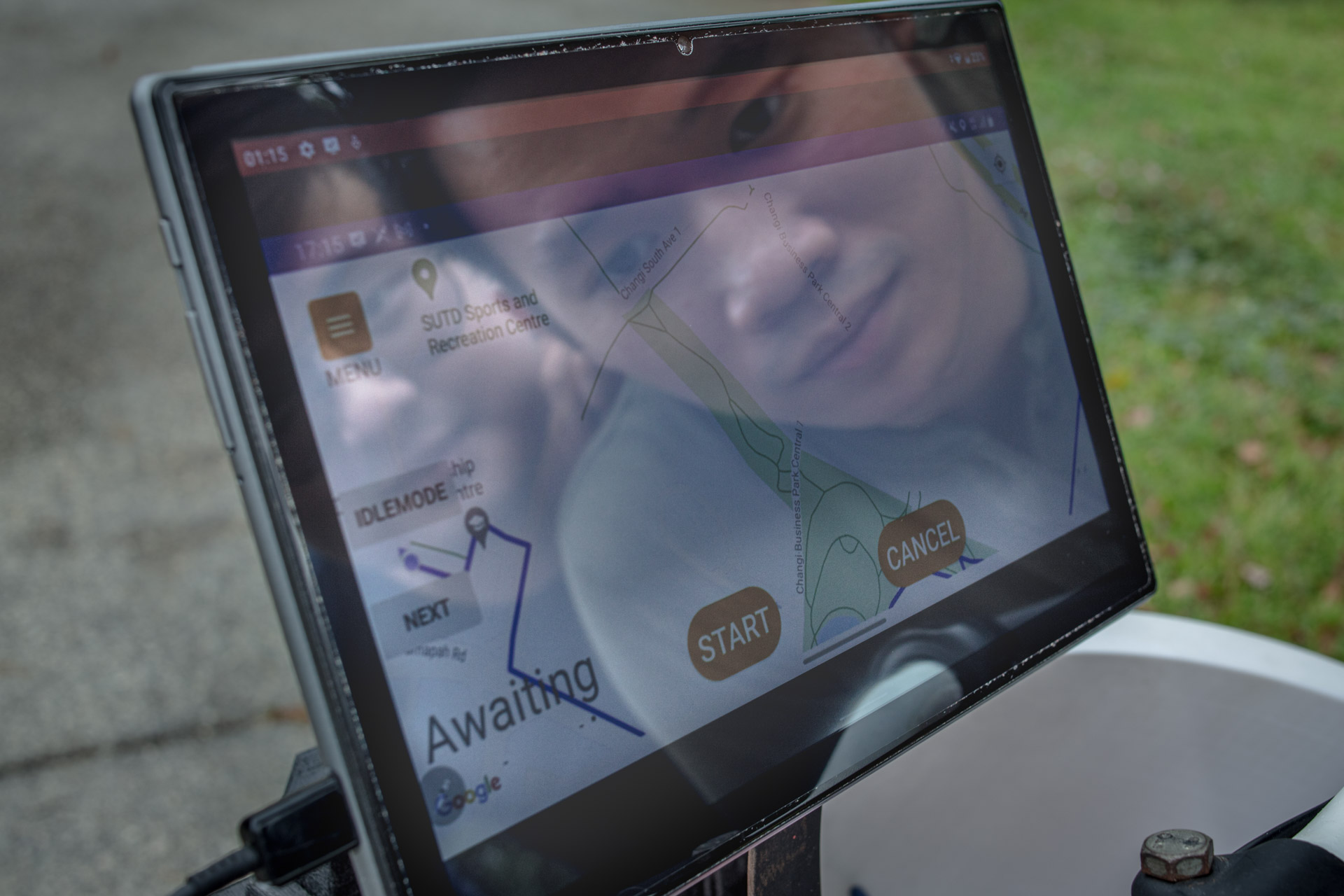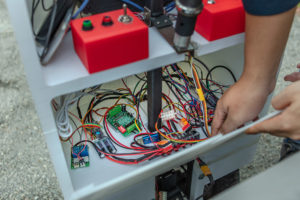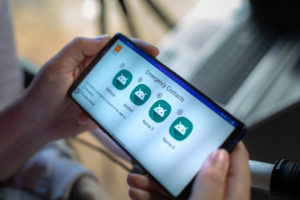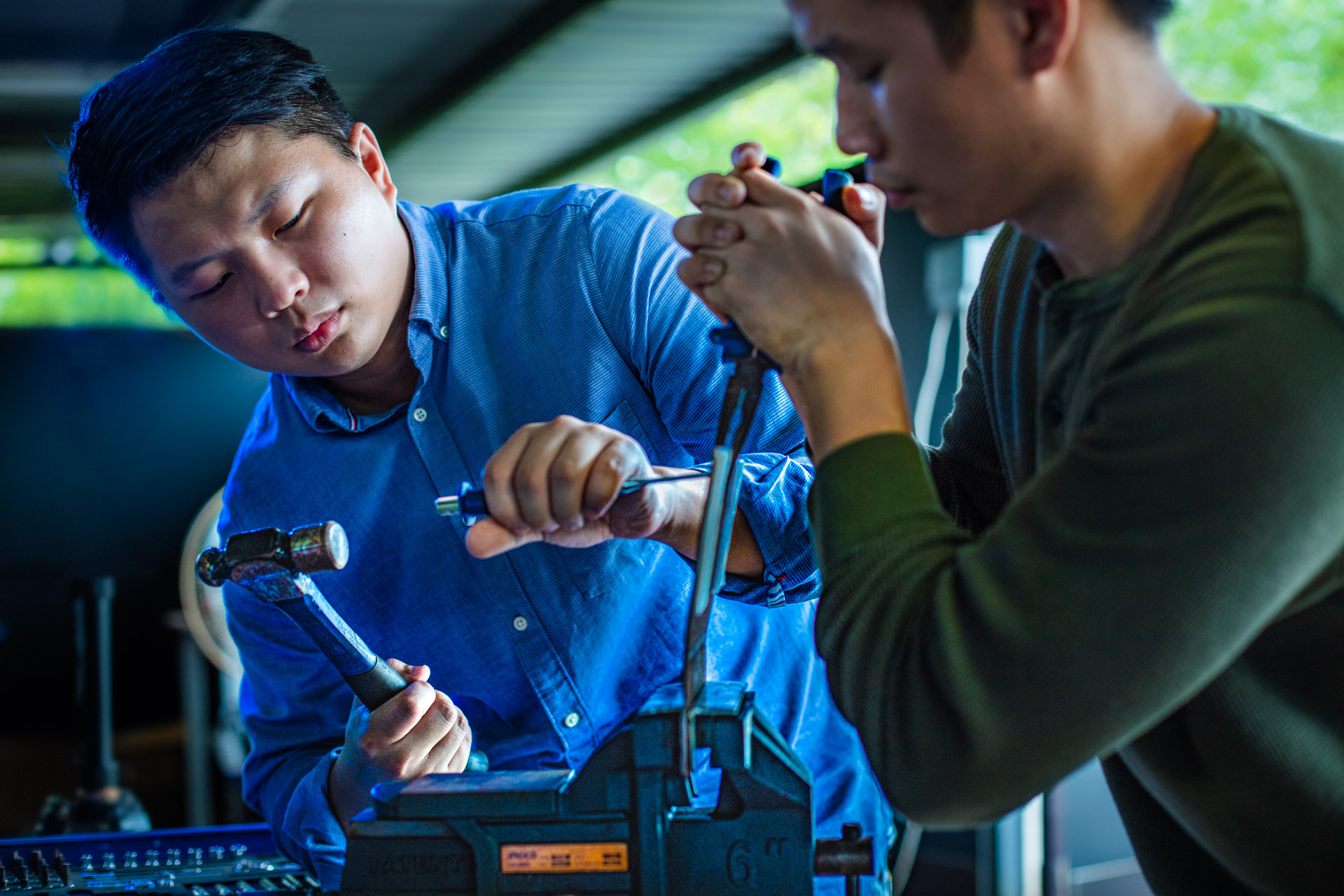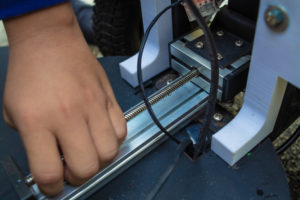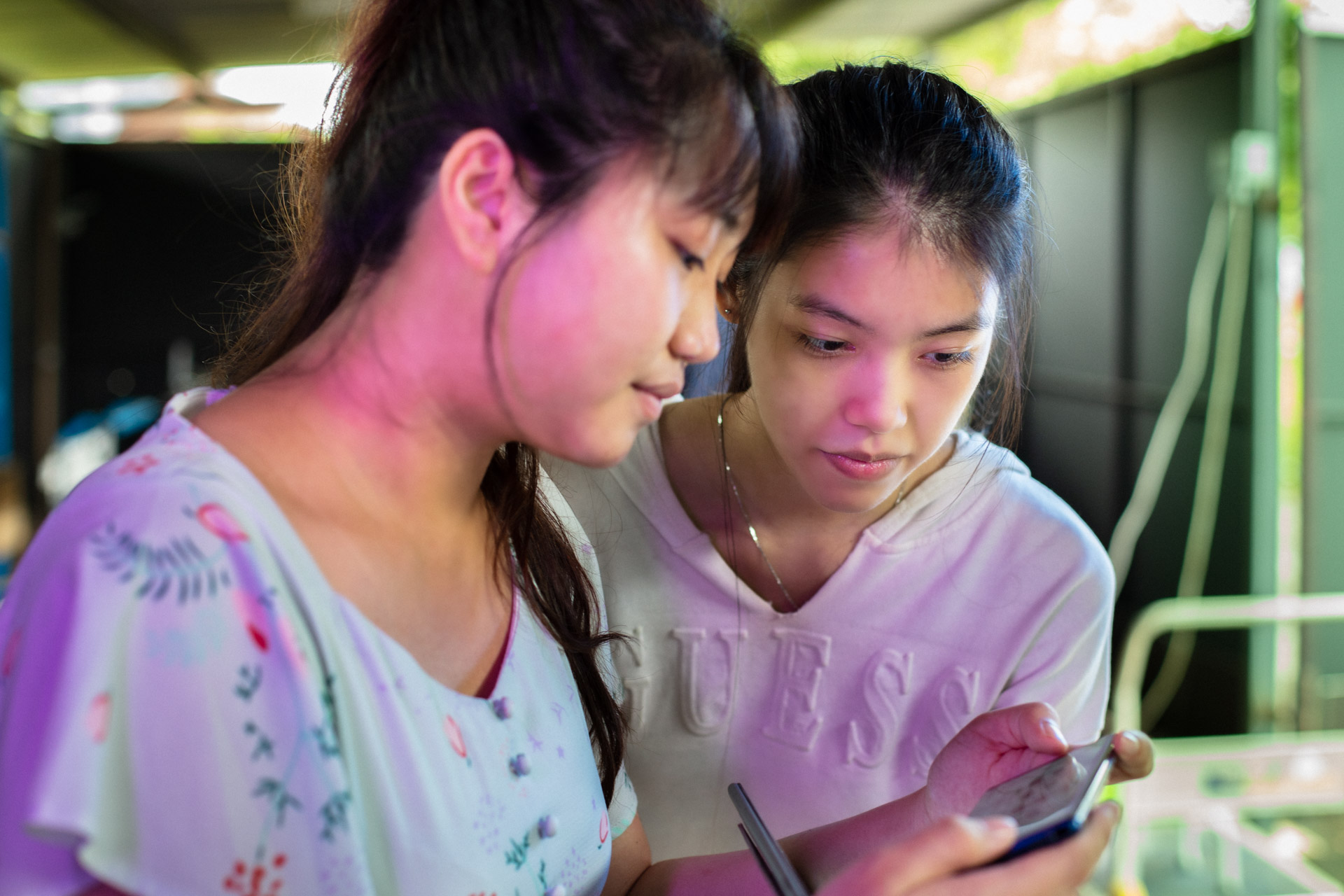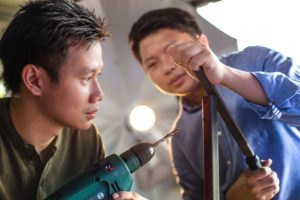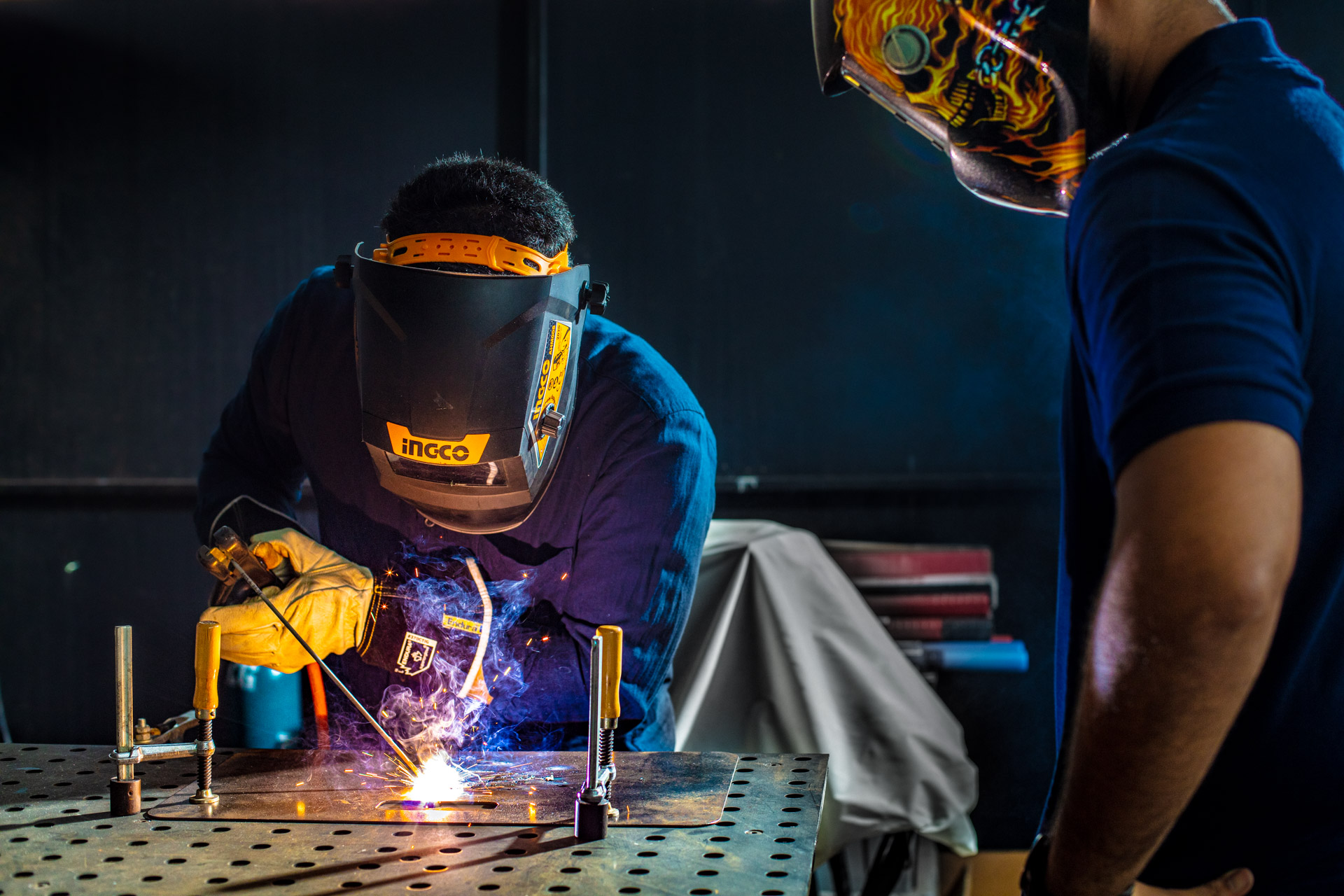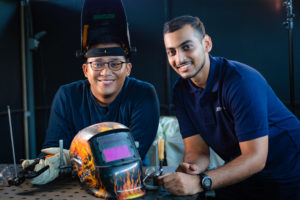The Whizzpod is a semi-autonomous Personal Mobility Aid (PMA) designed with our elders in mind. We speak to the team to find out how it works!
Team Whizzpod
From left to right: Ryan Gen Zi Qiang (ISTD), Iman Heizer Pua (ISTD), Muhammad Shahmi bin Mohd Sabli (EPD), Melissa (ISTD), Gabriel Koh Kia Kheng (ISTD), Jazreel Kwek (ISTD), and Anish Kyle Adipudi (EPD).
The team’s workstation is located around 200 metres away from the campus centre. To get there, we can either follow the footpaths, or take a more scenic route – a leisurely one-minute stroll across an open field next to the campus drop-off point.
“The sunset here is beautiful,” Iman smiles as the team pulls open their workshop’s huge metallic doors, revealing an interior filled with tools of all shapes and sizes. It’s a mechanical engineer’s dream playground.
“The shed belongs to the EV (electric vehicle) Club,” Anish explains. “The three of us are members,” he continues, gesturing to himself, Iman and Shahmi. “It helps a lot that we get to use this facility for our project.”
Meet the Whizzpod*
We soon get a glimpse of the project as the team carefully hoists a compact, white scooter-like vehicle off a stand in the middle of the workshop.
“This is the Whizzpod,” Ryan introduces proudly as the rest of the team fusses over the vehicle, fixing loose wires and checking their connections. “It’s essentially a semi-autonomous PMA designed to transport the elderly,” he explains.
*Whizzpod is the namesake of company sponsor Whizz Mobility, which funded, advocated and advised on the vehicle’s development.
A self-driving vehicle for the elderly
PMAs, as LTA puts it, are devices designed to ferry around individuals who have difficulty walking; like wheelchairs and mobility scooters. Remember the last time you saw an uncle or aunty riding into the MRT train on a scooter (like a boss)? That’s a PMA – and the Whizzpod is primed to be a better and smarter version of that.
“We want it to be like an assistant to the elderly on the roads,” Iman begins. “So if certain functions can be taken over by a software, we’ll try to integrate that to improve their user experience.”
So what does it feel like to be on the Whizzpod? Let’s take it out for a (slow) ride to find out! (Fun fact: PMAs are only permitted to travel up to 10km/h. Safety first!)
A seat fit for the silver-haired kings and queens
The first thing we notice when we hop on board is how comfortable the seat is. Turns out, that’s a gaming chair from a not-so-secret brand (go figure!) sitting underneath the inconspicuous grey covering; retrofitted with elderly-friendly features.
“We removed the swiveling part of the chair and replaced it with a lifting column that goes up and down with the press of a button,” Shahmi points out. “This way, the elderly can adjust the height of the seat without exerting pressure on their knees.”
“Comfort is one of our cooler features, really,” Iman adds as the group laughs in agreement.
An elderly-friendly interface
Now that we’re nicely settled in, it’s time to hit the roads!
A quick tap on the screen (in between the handlebar) reveals a simple interface with large menu buttons and clearly labelled instructions. “The elderly respond better to interfaces that are straightforward and clutter-free,” Jazreel explains. “So we made the UI (user interface) as simple as possible so that they can use it with ease.”
To activate the self-driving mode, all we have to do is bring up the map, select a bookmarked address or input a new one, and voila, the Whizzpod will start driving itself. We can then sit back and relax – until we hit a “danger zone”
Safety on the roads
Guided by computer vision and artificial intelligence (AI), the Whizzpod is programmed to identify potential “danger areas” like traffic junctions, bus stops and other obstacles. When it determines that an area is unsuitable for autonomous travel, it switches to manual operation and returns navigation control to the user.
“We don’t want the vehicle to be fully autonomous for safety reasons,” Iman elaborates. “In areas where human and vehicular traffic are high, we want the user to be in control.”
As such, we can think of the Whizzpod as the elderly’s extra pair of eyes and legs. “We’ve heard of cases where accidents happen because the elderly lose control of their PMAs,” Ryan adds. “The Whizzpod can prevent that by automatically coming to a stop when obstacles are detected so as to avoid collisions.”
But if an accident were to happen, the Whizzpod is programmed to send an automated message, along with location details, to the user’s next-of-kin through a useful ‘Emergency Contacts’ function; so their loved ones can be promptly alerted.
Goodbye six-point turns
As the vehicle chugs along merrily, the team reveals another interesting feature. “We got feedback from our initial research that the elderly find it difficult to maneuver out of tight spaces,” says Anish. “Like in the lifts, buses and the train.”
“They have to make five, six-point turns in order to get out,” Shahmi elaborates. “And that’s really inconvenient, especially when many people are around.”
To solve this pertinent problem, the team tinkered with the front wheels, played around with physics, and eventually came up with a way for the vehicle to rotate on the spot.
“What we did was to reduce the overall turning radius so it’s much easier for the elderly to move around in tight spaces.”
A multidisciplinary dream team
As we make our way back to the shed, we can’t help but notice what a multifaceted project the Whizzpod is.
“Yes, so there’s hardware, software, electronics, UX, UI…” Gabriel trails off. “We really needed to have disparate skills for this project, so I’m glad we came together and pulled this off!”
“Even though we don’t have an electrical (engineering background) person,” Ryan adds. Gabriel responds with a laugh: “Oh yes, that’s quite a bit of a problem, but we self-learn a lot in SUTD, so we’re quite used to figuring things out ourselves. So, if we manage to get something to work, then this arrangement works!”
Iman continues with a laugh: “I guess it also helps that everyone did a bit of everything in our Freshmore terms, so we all have some sort of background. We just have to play around and, like he said, figure things out!”
A skill in need is a skill indeed
Speaking of skills, we soon learnt that this talented team has two certified welders on campus: Anish and Shahmi.
“It’s a very rare skill,” Iman admits. Shahmi responds modestly: “Yah, we took a course from the Fab Lab in Year Two, I think? We didn’t know what we would end up doing with it, but I guess it came in quite useful here!”
“Because of that, our prototype looks a lot more rigid and professional now,” Iman concludes.
Whizzing into the future
The Whizzpod may be a prototype at the moment, but its inception gives us a promising glimpse into the future of mobility aids, and how advancements in self-driving technology can empower our elderly to regain independence despite their limited mobility.
With 33.3% of Singapore’s population expected to be 65 years old and above by 2050, having self-driving PMAs around will certainly improve the lives of many in the near future.
Like what you just read?
Have a query for our students and/or Admissions Team? Speak to them here!
Find out what student life and Freshmore year is like in SUTD.
Find out more about some of the scholarships and financial aid schemes available at SUTD.
Rewatch our talks and join our post-Open House programmes on our Open House website!




















